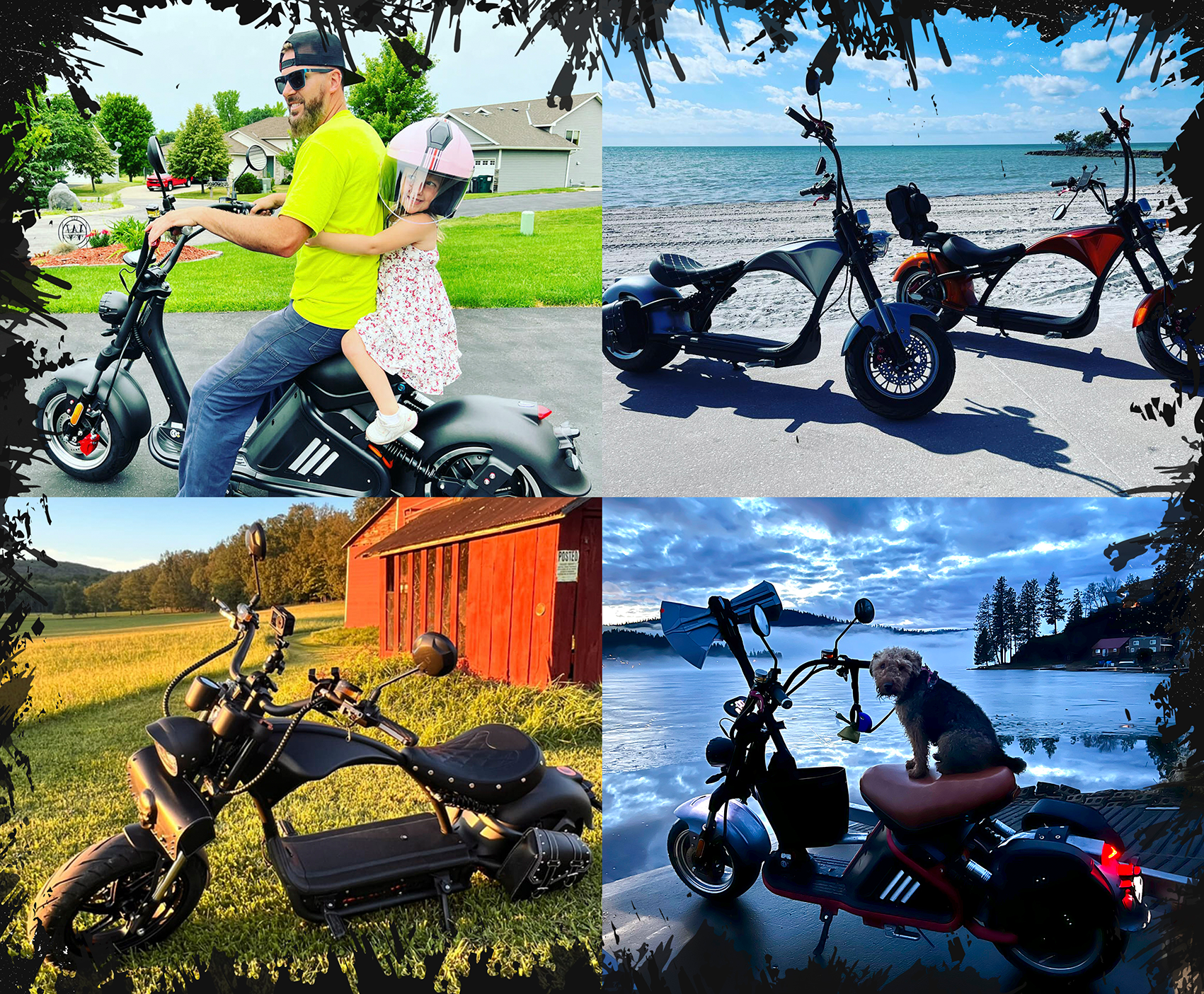Planning the Trip:
Thorough planning is the key to a smooth trip. Focus on whether the performance of the scooter can meet the actual traveling needs, and make sure that its scooter's range can adequately cover the expected distance to be traveled, in order to prevent being stranded halfway through the trip due to power exhaustion.
Also, pay attention to the weather forecast and road conditions. When encountering icy, waterlogged, steep slopes or construction sections, promptly adjust your route or choose other modes of transportation to reduce the risk of accidents.
Safety Measures:
Neglecting safety is a serious mistake. It goes without saying that helmets are essential safety equipment. Riders should take precautions against cold and warmth when traveling, fully equipped with such as gloves, knee pads, elbow pads, etc., and wear warm clothing, taking into account both safety and protection from the cold.
Battery:
Remember to charge and check battery capacity before you leave. Cold winter temperatures can reduce the chemical activity and conductivity of batteries, resulting in shorter battery life. If finances allow, carry a spare battery just in case.
Tires:
Tires are the only point of contact between the scooter and the ground when riding, and their condition directly affects the safety and comfort of riding.
For this reason, it is vital that tires are carefully inspected on a regular basis. Make sure there is no visible wear on the tread of the tires, and look out for sharp foreign objects that could cause a drop in performance or an accidental blowout.
The condition of the tires should be continuously monitored throughout the year, especially in winter when low temperatures and slippery road surfaces increase the risk of driving, and when good tread depth is more important for drainage, skid resistance and grip. When the electric car tire wear is serious, be sure to replace the new tire in time to ensure driving safety.
Brake:
Ensure that the front and rear brakes are functioning properly and braking well, especially on wet or icy roads where brake effectiveness is critical.
Lights and Signals:
Daylight hours are short and it gets dark earlier in the winter, so check that all lighting fixtures (including headlights, taillights and turn signals) are working properly.
Screw Tightening & Suspension:
Make sure there are no loose screws in all parts of the vehicle, especially important connections such as handlebars and pedals.
Check if there is any abnormality in the suspension system to ensure that it still maintains good stability and comfort on bumpy roads.


